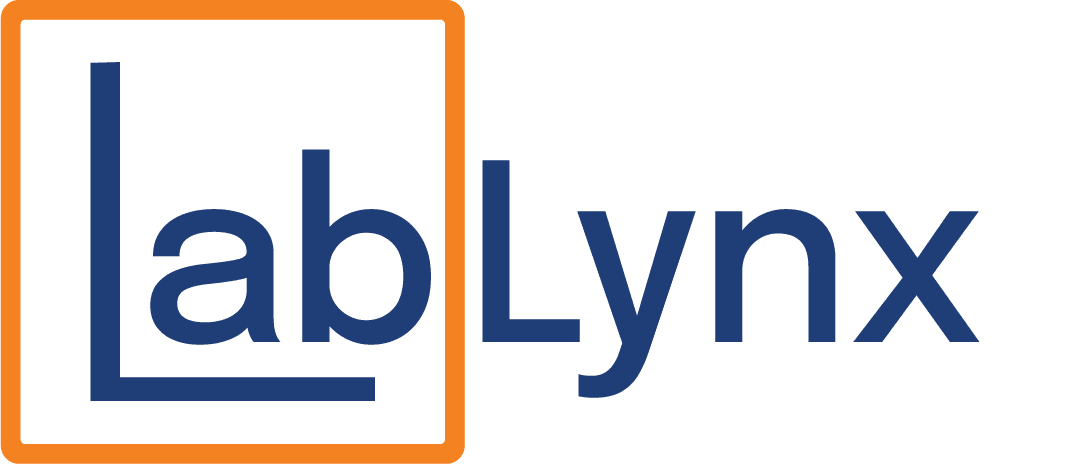Testing within the primary roles of a food and beverage lab
Food and beverage laboratory personnel tap into numerous scientific disciplines for the work they do. Among the various roles the food and beverage lab serves, disciplines such as biochemistry, biotechnology, chemical engineering, chemistry, fermentation science, materials science, microbiology, molecular gastronomy, and nutrition and food science are applied.[1][2][3][4] As such, a diverse skillset is typically required by the food and beverage scientist, requiring not only hard skills in microbiology, biochemistry, and fermentation, but also the flexibility and nimbleness to apply those skills to an industry with a rapidly changing consumer dynamic.[5]
These disciplines are applied to various types of testing. A 2013 Advantage Business Media survey of food and beverage processors and their laboratories revealed that 70.6 percent of respondents were testing for quality, 57.7 percent were testing for consistency, and 56.5 percent were conducting food safety tests for pathogens. Some 29.4 percent were testing for packaging accuracy claims, and 23.5 percent were testing for the presence of reported and unreported allergens.[6] Yet these statistics tell only part of the story; the type of testing occurring within a food and beverage lab will vary depending on the role it plays within the larger framework of industry needs. The following subsections examine the three primary roles of these labs and the testing required to meet their goals.
R&D roles
The laboratory participating in this role is performing one or more tasks that relate to the development or improvement of a food, beverage, additive, or spice. It may even conduct testing slightly outside its typical purvey, as with the conjunction of materials science with food bioengineering. The following types of activities within R&D will typically involve some level of laboratory participation. A brief set of comments follows each.
- Overall food innovation and development: International Center for Food Chain and Network Research’s Schiefer and Deiters note that the food and beverage industry as a whole faces a number of significant challenges today, including economic and noneconomic changes, consumer lifestyle changes, global increases in food consumption, degradation and loss of cropland, and societal changes to attitudes concerning sustainability.[7] These types of challenges require a food and beverage industry that is more agile and innovative. The analytical techniques used to meet these challenges will vary widely depending on the R&D goal. Improving the flavor of plant-based meat substitutes, for example, comes with somewhat different analytical techniques and disciplinary requirements than say improving the three-dimensional food printing of said meat substitutes.[8]
- Aroma/flavor analysis and formulation: Here the concept of “sensomic” study, an approach to describing the sensory properties of foodstuffs at a molecular level[9], plays an increasingly important role.[9][10] This involves analytical techniques such as gas chromatography, liquid chromatography, and spectrophotometry, used in conjunction with chemometric data analysis to isolate and act upon volatile compounds from one or more samples.[9][10][11]
- Genetic modification for improved yields and nutrition: Here knowledge and skills in genetic analysis, modification, and expression are required, in turn requiring the equipment and skill for genetic sequencing, microbial transformation, genetic use restriction technology (GURT), Northern or Western blotting, reverse transcription polymerase chain reaction (RT-PCR), etc.[12] While this may largely fall in the realm of agriculture, a few food and beverage business may bring their genetic modification R&D efforts in-house as an overall effort to improve a majority of its products.
- Nutritional reformulation: Reformulation requires a broad array of analytical techniques and industry knowledge, varying based upon the component sought out for change. However, O’Sullivan argues that the three most significant components of food that typically need to be modified are salt, fat, and sugar. As such, balancing these in reformulations is indeed challenging for chemical, sensory, and other reasons.[13] Adjusting salt levels, for example, requires chemical knowledge about salt reduction’s effects on meat’s shelf life and what substitutes or additives can be used to balance out the reduced salt content.[14]
- Stability, cycle, and challenge testing: Multiple deteriorative catalysts can influence the shelf life of a product, from microbiological contaminants and chemical deterioration to storage conditions and the packaging itself. As such, there are multiple approaches to those catalysts, from introducing additives to improving the packaging.[15] The analytical techniques applied in stability, cycle, and challenge testing will vary based on, to a large degree, the product matrix and its chemical composition.[15] This includes microbiological, calorimetry, spectrophotometry, spectroscopy, water content, texture, viscosity, dispersibility, and other types of analyses.[15][16]
- Packaging analysis and extractable and leachable testing: Materials that contact food and beverages receive special regulatory consideration in various parts of the world. Concerns of chemicals and elements that can be extracted or leach into food contact materials add another layer of complexity to developing and choosing packaging materials for foods and beverages. This requires extractable and leachable testing at various phases of product development to ensure the packaging selected during formulation is safe and effective.[17] This testing could involve a number of techniques ranging from gas and liquid chromatography to ion chromatography and inductively coupled plasma mass spectrometry.[18]
Pre-manufacturing and manufacturing roles
The laboratory participating in this role is performing one or more tasks that relate to the preparative (i.e., pre-manufacturing) or quality control (i.e., manufacturing) tasks of food and beverage production. The following types of activities within the pre-manufacturing and manufacturing stages will typically involve some level of laboratory participation. A brief set of comments follows each.
- Allergen, calorie, and nutrition testing: From label accuracy to consumer safety, this type of testing is critical to food and beverage manufacturers. Caloric and nutritional testing—in conjunction with meeting regulation-driven labeling requirements—lands firmly in the role of pre-manufacturing activity, most certainly after commercial formulation and packing requirements have been finalized but before the formal manufacturing process has begun.[19] This role will usually require laboratory analytical techniques such as calorimetry, laser scanning confocal microscopy, immunoassays, and mass spectrometry.[20]
- Quality control testing: A food or beverage product’s launch success hinges on many variables; if one variable is off, it may very well be rejected by the consumer. This demands a solid approach to quality. Many aspects of food and beverage production require high levels of quality, and as such, the type of analytical testing that takes place will vary, sometimes significantly, depending upon the associated risk. Are microbiological, physiological, or chemical risks being managed? These and other questions will determine the laboratory approach to quality control testing.
Post-production regulation and security roles
The laboratory participating in these roles is performing one or more tasks that relate to the post-production examination of foods and beverages for regulatory, security, or accreditation purposes. The following types of activities within the post-production regulation and security stages will typically involve some level of laboratory participation.
- Authenticity and adulteration testing: A variety of local, regional, national, and international entities (e.g., Operation OPSON, E.U. Food Fraud Network, and U.S. Customs and Border Protection) are responsible for detecting and preventing violations of food supply chain laws and regulations across national and international borders. A variety of analytical techniques are required to identify foods, beverages, and ingredients that don’t match labelling requirements or are adulterated. Among these techniques are DNA fingerprinting; visible, ultraviolet, infrared, fluorescence emission, and nuclear magnetic resonance spectroscopy; mass spectrometry; isotopic analysis; chromatography; polymerase chain reaction; differential scanning calorimetry; chemometric; and “electric nose and tongue” techniques.[21]
- Accreditation-led testing: At the end of 2021, the U.S. Food and Drug Administration amended the Food Safety Modernization ACT (FSMA) to include the Laboratory Accreditation for Analyses of Foods (LAAF) rule, which mandates laboratory “testing of food in certain circumstances” be performed by LAAF-accredited laboratories. LAAF represents one of several legal and regulatory forces driving accreditation of food and beverage laboratories to a higher standard. It also means greater potential for more testing opportunities for the third-party food and beverage lab wishing to expand into enforcement and security roles. The type of testing they conduct will already mirror those of other roles mentioned prior, but with greater emphasis on meeting stricter testing requirements.
References
- Nollet, L.M.L.; Toldrá, F., ed. (2015). Handbook of Food Analysis (Two Volume Set) (3rd ed.). CRC Press. pp. 1568. ISBN: 9781482297843. https://books.google.com/books?id=KtAdCgAAQBAJ&printsec=frontcover
- Nielsen, S. (2015). Food Analysis Laboratory Manual (2nd ed.). Springer. pp. 177. ISBN: 9781441914620. https://books.google.com/books?id=i5TdyXBiwRsC&printsec=frontcover
- Douglas, S.E. (July 2022). “Labs by industry: Part 2”. The Laboratories of Our Lives: Labs, Labs Everywhere! (2nd ed.). LIMSwiki. Retrieved 18 January 2024. https://www.limswiki.org/index.php/LII:The_Laboratories_of_Our_Lives:_Labs,_Labs_Everywhere!/Labs_by_industry:_Part_2
- Bhandari, B.; Roos, Y.H. (2012). “Chapter 1: Food Materials Science and Engineering: An Overview”. In Bhandari, Bhesh; Roos, Yrjö H… Food Materials Science and Engineering. Chichester, West Sussex, UK ; Ames, Iowa: Wiley-Blackwell. pp. 1–25. ISBN: 978-1-4051-9922-3.
- “Diverse skill sets needed for growing opportunities”. Institute of Food Technologists. 26 October 2020. Retrieved 18 January 2024. https://www.ift.org/news-and-publications/news/2020/october/26/diverse-skill-sets-needed-for-growing-opportunities
- Flynn, D. (7 October 2013). “Food Labs Integral to Changing World of Food Safety”. Food Safety News . Retrieved 18 January 2024. https://www.foodsafetynews.com/2013/10/food-labs-integral-to-changing-world-of-food-safety/
- Schiefer, G.; Deiters, J. (2021). “Chapter 1: Food innovation dynamics and network support”. In Galanakis, Charis Michael (in en). Innovation Strategies in the Food Industry: Tools for Implementation . Academic Press. pp. 3–16. ISBN: 978-0-323-91552-6. https://books.google.com/books?id=jqZJEAAAQBAJ
- Patel, P. (18 February 2021). “Beyond Burgers: Animal and Plant Cells Combined for 3D-Printed Steaks”. IEEE Spectrum . Retrieved 18 January 2024. https://spectrum.ieee.org/3d-printed-meat
- Vrzal, Tomáš; Olšovská, Jana (15 October 2019). “Sensomics – basic principles and practice”. KVASNY PRUMYSL 65 (5). doi: 10.18832/kp2019.65.166. ISSN: 2570-8619. https://www.kvasnyprumysl.eu/index.php/kp/article/view/190
- Parker, J.K.; Elmore, J.S.; Methven, L., ed. (2014). Flavour development, analysis and perception in food and beverages. Woodhead Publishing Series in Food Science, Technology and Nutrition. Waltham, MA: Woodhead Pub. pp. 448. ISBN: 978-1-78242-103-0. https://books.google.com/books?id=DnB7AwAAQBAJ&printsec=frontcover
- Zellner, B.d’A.; Dugo, P.; Dugo, G. et al. (2015). “Chapter 4: Flavor”. In Nollet, L.M.L.; Toldrá, F… Handbook of Food Analysis (Two Volume Set) (3rd ed.). CRC Press. pp. 47–64. ISBN: 9781482297843. https://books.google.com/books?id=KtAdCgAAQBAJ&printsec=frontcover
- Carrillo, W. (2020). Biotechnology and Food Production. ED-Tech Press. pp. 404. ISBN: 9781839473432. https://books.google.com/books?id=qePEDwAAQBAJ&printsec=frontcover
- O’Sullivan, Maurice G. (2020). “Chapter 1: Understanding the requirement to reformulate: Science, health, consumer demand, regulation, and capability”. Salt, fat, and sugar reduction: sensory approaches for nutritional reformulation of foods and beverages. Duxford, United Kingdom: Elsevier, Woodhead Publishing. pp. 1–28. ISBN: 978-0-12-819741-7. https://books.google.com/books?id=vE_VDwAAQBAJ&printsec=frontcover
- Kloss, Loreen; Meyer, Julia Dawn; Graeve, Lutz; Vetter, Walter (1 June 2015). “Sodium intake and its reduction by food reformulation in the European Union — A review” (in en). NFS Journal 1: 9–19. doi: 10.1016/j.nfs.2015.03.001. https://doi.org/10.1016/j.nfs.2015.03.001
- Subramaniam, Persis, ed. (2016). The stability and shelf life of food. Woodhead Publishing Series in Food Science, Technology and Nutrition (Second edition ed.). Amsterdam: Elsevier/WP, Woodhead Publishing. ISBN: 978-0-08-100436-4. OCLC: 956922925. https://search.worldcat.org/title/mediawiki/oclc/956922925
- Komitopoulou, E. (2011). “Microbiological challenge testing of food”. In Kilcast, David; Subramaniam, Persis. Food and beverage stability and shelf life. Woodhead Publishing Series in Food Science, Technology and Nutrition. Oxford: WP, Woodhead Publ. pp. 507–526. ISBN: 978-0-85709-254-0. OCLC: 838321011. https://search.worldcat.org/title/mediawiki/oclc/838321011
- Balogh, M.P. (2011). “Testing the Critical Interface: Leachables and Extractables”. LCGC North America 29 (6): 492–501. https://www.chromatographyonline.com/view/testing-critical-interface-leachables-and-extractables
- “Extractables and leachables testing (E&Ls)”. Leeder Analytical. Retrieved 18 January 2024. https://leeder-analytical.com/extractables-and-leachables-testing/
- “What Do I Need To Know About Nutrition Testing for My Beverage Brand?”. BevSource. Retrieved 18 January 2024. https://www.bevsource.com/news/what-do-i-need-know-about-nutrition-testing-my-beverage-brand
- Dimitrova, M. (8 October 2019). “Nutrition Analysis Techniques to Determine the Nutritional Content of Food”. AZO Materials . Retrieved 18 January 2024. https://www.azom.com/article.aspx?ArticleID=18555
- Downey, Gerard (2016) (in English). Advances in Food Authenticity Testing. S.l.: Woodhead Publishing… pp. 798. ISBN: 978-0-08-100233-9. OCLC: 1096681184. https://books.google.com/books?id=Q-8QCgAAQBAJ&printsec=frontcover





